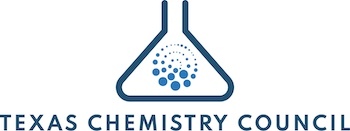Complete Story
05/09/2025
US Tariffs, Customer Uncertainty Complicate Outlook for Huntsman
Plastics News | Steven Pacitti | May 7, 2025
US Tariffs, Customer Uncertainty Complicate Outlook for Huntsman
Market uncertainty caused by U.S. tariffs has dampened confidence across the supply chain and created a COVID-like scenario, according to Huntsman CEO Peter Huntsman. Speaking at the company’s earnings conference call, he said he expects most of the current supply and demand issues, which are largely being driven by the uncertainty, to be resolved within the next few months as trade deals and alternative supply lines and sources emerge.
However, he anticipates tariffs on MDI will be longer lasting. “This past year, nearly 400 kilotonnes was imported into the U.S. and the Americas market, with about 75 percent of that coming from China,” he said. “This represents between 20 percent and 25 percent of the total domestic demand for the entire year. Just in the month of January of this year, more than twice the amount of MDI that was imported a year ago was imported into the U.S.”
By the end of the quarter in March, he said, imports into the Americas had dropped by 60 percent, and by more than 75 percemt from China. “It appears that this drop will continue into the second quarter as only 1 kilotonne of MDI from China came into the Americas during the first week of April,” he said. “These tariffs seemingly are longer term in nature, and I believe may have a greater impact on the Americas.”
The Woodlands, Texas- based Huntsman produces virtually all its material used in the Americas in North America, and believes it is in an ideal location to benefit from this. More specifically, Peter Huntsman said, as shipments from China were canceled during the latter part of the first quarter of this year, there seemed to be an oversupply of MDI on the Asian markets. Chinese MDI prices fell, as did raw materials.
“I do not see tariffs having a material impact on our performance products and advanced material divisions,” he said. “I can't clearly see what impact this will have on our customers’ end markets such as power and aerospace. But things seem to be moving towards a slightly more confident place than they were just a week ago.”
He sees opportunities for improved margin in the U.S. if the company can maintain or slightly increase its price, while European prices are matching raw materials. In Asia, he expects to see a fall-off in the second quarter.
“The Chinese markets are now better balanced,” he said. “So, we look at a price going from $18,500 a tonne down to $14,200, today sitting at $15,200. It’s been stable for the past couple of months.”
However, he said he continues to be frustrated by the lack of a clear and realistic energy in European-wide industrial policy, which he believes is needed to encourage investment. The company is looking for opportunities around the world that might provide a chance to increase its product footprint.
In application sectors, he points to a marked disconnect between orders and what is being produced across the automotive, aerospace, and downstream construction materials markets. This is being driven by several weeks of “supplier panic,” he said. “We’re seeing raw materials in some applications drop as much as 15-20 percent just in the last week or two.”
Analysing performance, he points to the company meeting expectations across January and February, and a great deal of volatility in March and April. However, he expects the dust will gradually start to settle in May. “As we look into the second quarter, our single largest variable is going to be around what actually happens with volumes, order patterns, and prices,” he said. “The vast majority of what we sell, the vast majority of where we make money is in domestically produced product, both in North America and in Asia.”
In response to market conditions, Huntsman recently announced several consolidation efforts, including the closure of its Boisbriand, Quebec, facility and right-sizing its European operations. The Boisbriand facility specialises in spray PU foam insulation, and was acquired as part of the company’s acquisition of Demilec in 2018.
The company has also doubled its planned cost savings to $100m, and expects to offer more details on this as the quarter progresses. “I think I gave some indications about having to calibrate our cost structure to the market realities, particularly in Europe,” he said.

